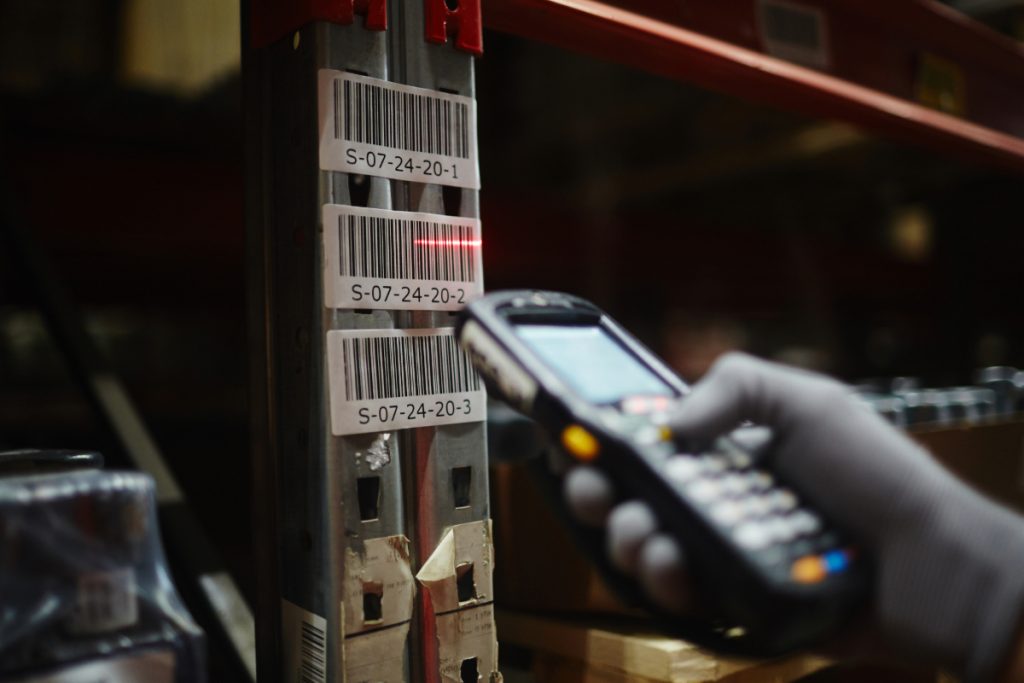
As a small business owner, you know that every efficiency gain in your warehouse can have a significant impact on your bottom line. One powerful tool that can revolutionize your warehouse management is the humble barcode. While barcodes may seem like a technology reserved for large enterprises, the truth is, barcode implementations have a bigger impact for small businesses like yours.
In this guide, we’ll help you understand the importance of barcodes and explore how you can best implement them into your warehouse operations. By the end, you’ll have a clear understanding of the benefits, hardware requirements, and step-by-step strategies to make barcodes work for your small business.
Barcodes: What Are They and Why Do They Matter?
At their core, barcodes are simply a way to encode information in a machine-readable format. They come in various shapes and sizes, from the classic one-dimensional (1D) linear barcodes to the more advanced two-dimensional (2D) QR codes. Each type serves a specific purpose, and choosing the right one for your needs is crucial.
For small businesses with warehousing and manufacturing operations, barcodes offer a wealth of advantages. They allow you to track inventory with pinpoint accuracy, streamline your receiving and putaway processes, and generate valuable data insights to optimize your workflows. In essence, barcodes can transform your warehouse from a chaotic space into a well-oiled machine.
But the benefits of barcodes go beyond just efficiency. By implementing a barcode system, you can create historical data for future decision making, reduce costly errors, and free up your employees to focus on more strategic tasks. It’s a win-win situation for your business and your team.
Hardware Requirements: What Barcode is Best?
To reap the full benefits of barcodes, you’ll need to invest in the right hardware. The two key components are barcode scanners and barcode printers.
Barcode Scanners:
Handheld scanners are a popular choice for small businesses, as they offer flexibility and mobility. These devices allow your warehouse staff to quickly and accurately read barcodes on inventory items, pallets, and storage locations. When selecting a scanner, consider factors such as scan speed, durability, and compatibility with your existing systems.
For more stationary applications, such as at your receiving or packing stations, you may want to opt for fixed-mount scanners. These devices offer hands-free scanning and can be integrated seamlessly into your workflows.
Barcode Printers:
To create the barcode labels and tags you’ll use throughout your warehouse, you’ll need a reliable barcode printer. Desktop printers are a great fit for small-scale labeling needs, while industrial-grade printers are better suited for high-volume, rugged environments.
When choosing a printer, pay attention to factors like print resolution, label size, and label durability. You’ll also want to ensure that the printer is compatible with the barcode format you’ve selected and can easily integrate with your existing systems.
Best of Both: An Ideal Software Solution
While the right hardware is essential, the real power of barcodes lies in the software you use to manage and integrate them into your warehouse workflows. Ideally, you’ll want a solution that combines the functionality of both barcode scanners and printers, all in one cost-effective package.
Enter a Mobile Warehouse Solution. These versatile solutions allow you to leverage the power of barcodes using nothing more than a smartphone or tablet, allowing your employees to instantly transform everyday devices into powerful warehouse tools.
The beauty of mobile barcode apps is their flexibility. Many of them are compatible with both iOS and Android devices, meaning your team can use the devices they’re already comfortable with. This reduces the need for costly, specialized hardware and ensures a seamless integration into your existing operations.
But the benefits of mobile barcode apps go far beyond just scanning. The best solutions on the market also offer robust barcode printing capabilities. With just a few taps, your staff can design and print 2D high-quality barcode labels right from their mobile devices, eliminating the need for a dedicated barcode printer in every corner of your warehouse.
It’s a simple, cost-effective solution that can transform your warehouse operations and give your small business a competitive edge.
Integrating Barcodes into Your Warehouse Workflows
Now that you have the necessary hardware in place, it’s time to start incorporating barcodes into your daily warehouse operations. Here are some key areas to focus on:
Receiving and Putaway:
As inventory arrives at your warehouse, use barcodes to streamline the receiving process. Scan the barcodes on incoming items and automatically update your inventory records. This not only saves time but also reduces the risk of data entry errors.
When it comes to putaway, barcodes can help you quickly and accurately identify the correct storage locations for your products. Assign unique barcodes to each bin, shelf, or pallet, and have your staff scan them as they’re putting away the items.
Inventory Management and Tracking:
By tagging each item with a unique barcode, you can easily track stock levels, monitor expiration dates, and quickly identify the location of specific products. This level of visibility can also help you make more informed decisions about inventory replenishment, reducing the risk of stockouts or overstocking.
Picking and Packing:
Streamline your order fulfillment process by incorporating barcodes into your picking and packing workflows. When an order comes in, have your staff scan the barcodes on the required items, ensuring they’re grabbing the right products. This not only enhances accuracy but also speeds up the overall process.
Barcodes can also be used to track the packing process, allowing you to quickly identify which items have been packed and which are still waiting to be shipped.
Shipping and Freight Management:
As your products leave the warehouse, barcodes can help you maintain control and visibility over the shipping process. Scan the barcodes on outgoing boxes, pallets, or shipments to automatically update your records and generate the necessary shipping documentation.
This level of tracking can also be invaluable when it comes to managing freight and logistics, as you’ll have a clear trail of where your products are at all times.
Data Collection and Analytics:
One of the most powerful aspects of barcodes is the wealth of data they can provide. By capturing barcode scans throughout your warehouse operations, you can gain invaluable insights into your inventory, workflows, and overall efficiency.
Use this data to identify bottlenecks, optimize your processes, and make data-driven decisions that can take your small business to new heights.
Implementing Barcodes: A Step-by-Step Guide
Ready to get started with barcodes in your warehouse? Follow these steps:
1. Assess your current operations: Take a close look at your existing warehouse processes and identify areas where barcodes could provide the most significant benefits.
2. Determine your barcode requirements: Decide on the barcode format, label size, and other specifications that best fit your needs. Remember, 2D Barcodes offer more storage versatility and readability.
3. Procure the necessary hardware and software: Invest in the right barcode scanners, printers, or Mobile Warehouse Solution.
4. Train your workforce: Ensure your employees are comfortable using the new barcode technology and understand how it fits into your warehouse workflows.
This process can often be drastically sped up through the help of outside inventory consultants.
5. Gradually integrate barcodes into your operations: Start with a pilot program in one area of your warehouse, and then gradually expand the use of barcodes across your entire facility.
6. Monitor and optimize over time: Continuously track the performance of your barcode system and make adjustments as needed to maximize its effectiveness.
By following this step-by-step approach, you can ensure a smooth and successful implementation of barcodes in your small business warehouse.
Takeaway
Barcodes may seem like a complex and daunting technology, but they will ultimately elevate small businesses like yours. By understanding the benefits, hardware requirements, and practical implementation strategies, you can transform your warehouse into a highly efficient, data-driven operation.
So, what are you waiting for? Take the first step towards streamlining your warehouse and giving your small business a competitive edge. Embrace the power of barcodes and watch your operations reach new heights.
Need more inventory related solutions? Start here.



